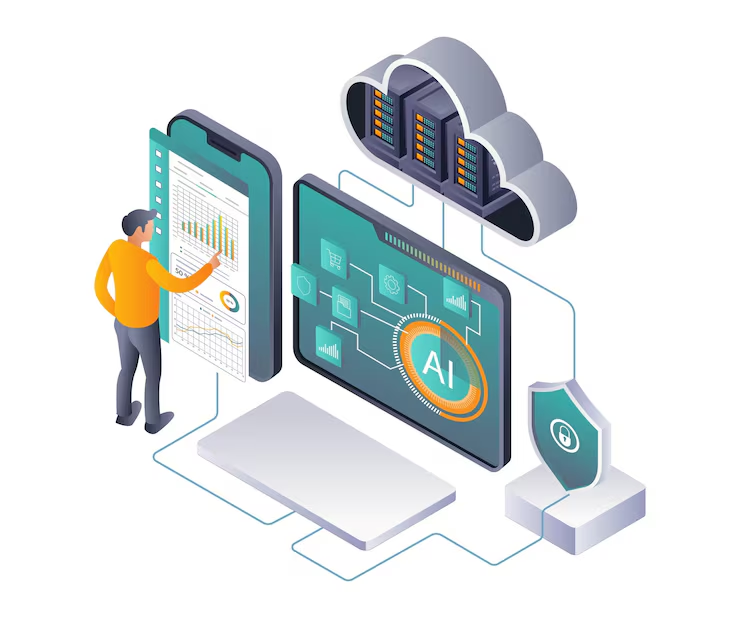Moving to a new enterprise resource planning (ERP) system is usually one of the biggest IT projects for a scaling up company. Oracle NetSuite ERP, in particular, is a prominent solution which is cloud-based and aims to integrate central business functions like accounting, finance, and customer relationship management (CRM). However, the road towards successful NetSuite ERP adoption often begins with one of the most intricate, yet crucial, steps: data migration. Companies face a risk of delays, data loss, and disruption of workflows if data migration is not planned and executed thoughtfully.
This blog analyzes common hurdles associated with moving data to NetSuite and provides effective measures to help businesses successfully migrate.
Common Migration Pitfalls – Data Loss, Formatting Issues, and Compatibility Problems
The process of data migration encompasses much more than just transferring data from one platform to another. It involves an intricate sequence of steps which, if not followed as described, can run into numerous problems.
Data Loss:
The worst-case scenario that stems from ineffective data migration is the permanent loss of outstanding inventory data. As a business, losing customer data, historical financial data, or product catalogs can be catastrophic for day-to-day operations paired with the reporting requirements for compliance monitoring.
Formatting Issues:
Due to improper storage systems, organizations encounter a problem with legacy systems as equations for data storage techniques. Dissimilar patterns or improper configuration can lead data fields into a mismatch which results in the corruption of records, once they are imported into NetSuite, or that they become unusable datasets.
Compatibility Problems:
Perhaps the most important problem is the NetSuite populated Emigration Source System incompatibility. Variations in database structure, field definitions, or custom workflows of a business can lead to data integration which will have no particular usage in the new system.
When these problems arise, they need to be dealt with immediately; any delays will impact the time needed to migrate and have a negative effect on savings and increased downtime.
Best Practices for Smooth Migration – Data Cleansing, Validation, and Mapping Strategies
An efficient business transition requires that a thorough and tactical approach be taken to configuring data. The very first step, and perhaps the most pivotal, is to perform a rigorous data clean-up exercise.
Data Cleansing:
In contemporary settings, businesses collect unnecessary, outdated, or fictitious data. Prior to migration, identification and scrubbing of duplicates should be done in addition to correcting erroneous data and uniform formatting. Not only does the increasing intricacy of data management quality control improve business outcomes, but the post-switch system performance in NetSuite consumes reliably better resources leading to enhanced user acceptance.
Data Validation:
Validation guarantees the accuracy and relevance of the information being transferred into the new system. Sample validation techniques such as email address confirmation, reconciliation of transaction records, and verification of customer profiles can be utilized. With numerous manual validation checks needed, validation scripts and automated controls will greatly lower error proportions.
Mapping Strategies:
Amendment of any data for every field in a legacy system must be accurately mirrored in NetSuite. This also accounts for standard and custom added fields. Having an all-inclusive data map for your custom fields guides the migration vision. Financial data, tax identifiers, and customer histories tend to be the more critical aspects and deserve great attention.
An effective data cleansing and mapping strategy minimizes disruption and helps the business to start gaining value immediately after going live.
Choosing the Right Migration Approach – Big Bang vs. Phased Implementation Models
One of the most critical decisions to make for a netsuite migration project is which method to use: the “big bang” approach which goes live at once, or a phased rollout.
Big Bang Implementation:
A Big Bang Implementation switches all parts of a company’s system to NetSuite at one set date. Unlike partial implementations, this does eliminate the need to run two systems in parallel and allows companies to quickly reap the full benefits of NetSuite; however, it does come with greater risks. One major drawback lies in the migration process– if there are any issues, all departments will be negatively impacted simultaneously which is quite destructive.
Phased Implementation:
With this model, businesses adopt NetSuite module by module– maybe starting with finance, inventory, CRM, etc. This lowers migration risks as smaller team’s changes can be focused on, making system refinement easier. Feedback can also be captured more easily, allowing for smoother tweaks to be made incrementally.
There are various advantages and disadvantages across both techniques. Each may vary based on a company’s size and the complexity as well as risk of their system. However, most mid-sized companies seem to prefer the phased implementation approach due to the operational risk reductions.
Testing & Quality Assurance – How to Verify Data Accuracy Post-Migration
The task is not done after migrating data into the new NetSuite environment. Validation checks such as testing and quality assurance work to verify that the data ‘makes sense’ and will function properly on a day-to-day basis.
System Testing:
Integration testing makes sure that all the modules in NetSuite are operational, including driving data visibility to correct interfaces. The capture of data such as order entry, invoicing, CPP accounting, user role sculpting, and versatile financial reporting need to be validated.
User Acceptance Testing (UAT):
Actual users interact with the system and perform tasks within it that replicate their ‘real-world’ roles. This stage captures bugs that went undiscovered, gaps in functionality, inconsistencies within the data, flaws in system design, and other issues. Bringing in end-users at this point enhances their sensitivity towards the system, and in many cases, their suggestions become very critical.
Reconciliation Checks:
Businesses ought to conduct reconciliation checks because financial information translated into the new system should tie into the old one. Both document preparations; balance sheet, profit and loss statement, and inventory listing need to be scrutinized on the two platforms.
In having a target structure to test, businesses manage to organize and eliminate problems in advance of operating the business using the system, which further improves version adoption from users.
Post-Migration Optimization – Training Teams and Refining Workflows for Seamless Adoption
Following data migration and system implementation, attention should be shifted to optimization strategies. After all, even the best systems require some form of user training and workflow structuring to realize grandeur.
Using NetSuite for Employee Training
Every organization has a new or existing ERP. That ERP system adds value only when used properly. Deploying training sessions on role-specific guides for each staff assures you that each of them will use the multiple features in NetSuite optimally. These trainings can be done through workshops, digital mediums, or one-on-one training that target the varying learning styles of employees.
Workflows Optimization:
With your newfound ERP system, it’s the best chance for you to rethink the prior workflows alongside the internal processes as they will need revision. With NetSuite, tasks associated with routine event repetition are automated. Approvals, reporting, and many more services are automated as well. Maximizing or refining the workflows guarantees NetSuite returns the investment made.
Constant Change:
The processes followed by businesses should be as adaptive as the ERP systems. Don’t hesitate to invite user feedback, and employ workshop timers to evaluate the performance of workflows and how well they’re working with the system and their efficiency periodically. These help the organization prepare and strategize accordingly. These scenario preparations allow the ERP and organization to be responsive, flexible, and dynamic.
Conclusion
Migrating to Oracle NetSuite is an operational inflection point for the business, but comes with its challenges. A miss of any strategic gaps ranging from implementation approach to post-migration optimization, every step has a distinctly defined importance in a successful migration. Through meticulous data cleansing and mapping, migration model selection, and adequate training and testing, companies can achieve a steadfast deployment of ERP along optimized business outcomes. With the deployable trajectory NetSuite provides through structured planning and execution, organizations can make the transition from sustenance to exponential growth.








